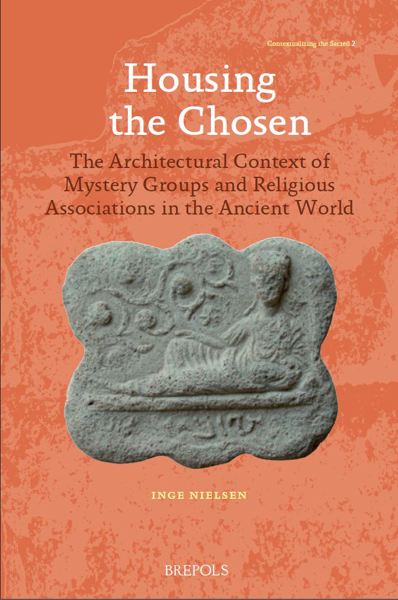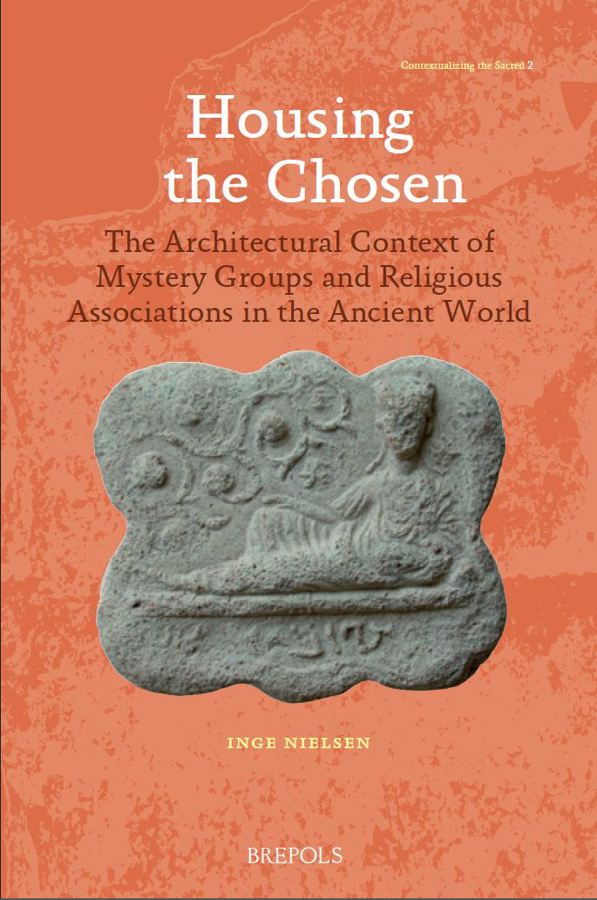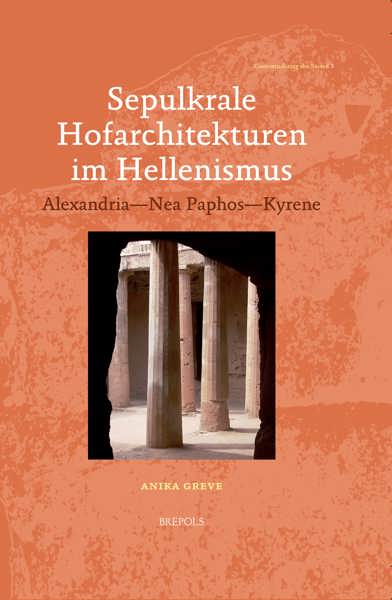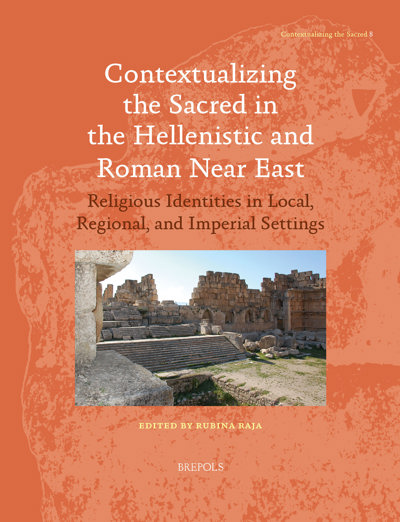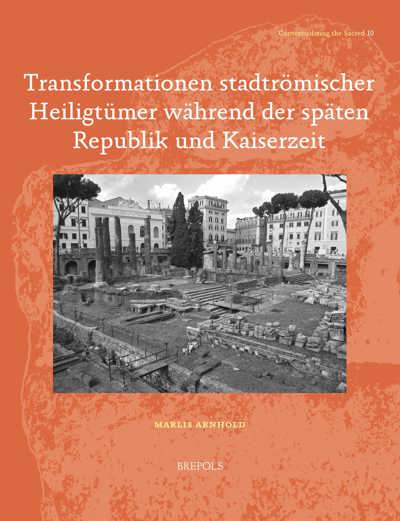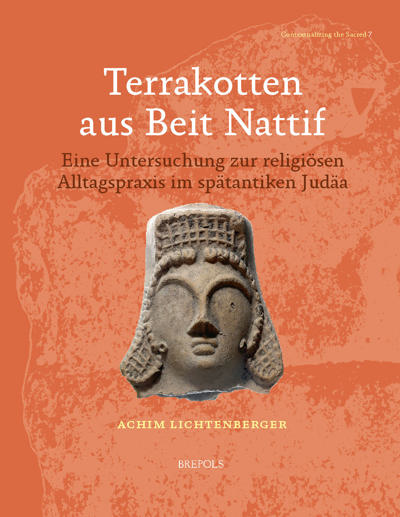
Housing the Chosen
The Architectural Context of Mystery Groups and Religious Associations in the Ancient World
Inge Nielsen
- Pages: xvi + 323 p.
- Size:216 x 280 mm
- Illustrations:194 b/w, 1 tables b/w.
- Language(s):English
- Publication Year:2014
- € 145,00 EXCL. VAT RETAIL PRICE
- ISBN: 978-2-503-54437-3
- Paperback
- Available
The aim of this book is to show how architecture can illuminate the functions of religious assemblies of various kinds in ancient society.
"(...) a good collection of archaeological material that helps to approach the topic of mysteries from a very different perspective."
Valentino Gasparini, Universität Erfurt in: Bryn Mawr Classical Review 2015.03.40
"Ungeachtet von Kritikpunkten im Einzelnen kommt der Untersuchung jedoch gerade in der vielschichtigen, umfassenden Bereitstellung und Verarbeitung einer immensen Materialfülle die Bedeutung und das Gewicht eines einschlägigen Handbuchs hinsichtlich dieses wichtigen Ausschnittes antiken religiösen Lebens zu." (Angelika Geyer, in: Gnomon 88, 2016, p. 348-351)
«(…) el libro de Nielsen servirá de referente para quienes accedan al estudio de los espacios religiosos en el ámbito de los misterios, pues constituye un esfuerzo de organización de extraordinaria valía.» (Jaime Alvar, in Latomus, 2016/2, p. 522)
“Inge Nielsen has collected an impressive number of plans, drawings and photographs which illustrate the architectural settings of ‘mystery groups’, ‘religious associations’, Diaspora Jews and early Christians.” (Douglas Ryan Boin, in the Journal of Roman Studies, 106, 2016, p. 282)
The architecture of ancient religious spaces has the potential to offer a deeper understanding of the religious groups who used the spaces and the activities they performed there. However, the large corpus of recent scholarship has for the most part overlooked architecture. This book investigates the spatial and architectural settings of mystery cults and religious assemblies from the eighth century bc to the fourth century ad and shows how architecture can illuminate the contents and societal functions of ancient religions. It examines deities whose cults included mysteries and/or were served by religious associations in the ancient world. Chapters treat the old Greek mystery cults of Demeter in Eleusis and the Great Gods in Samothrace as well as those of Dionysos, and the ‘foreign’ deities Isis/Serapis, Cybele/Attis, and Mithras. The book also treats religions and cults that did not include mysteries but were served by special religious groups, such as those belonging to the Syrio-Phoenician gods, the Jewish god in the diaspora, and the Christian god. The last section of the book combines the typological results from the first section on architecture with the presentation of the cultic functions of religious groups in the second section. This comparative analysis seeks to understand the social and spatial context for the activities of cults with a main focus on the Hellenistic and Roman periods, in particular through distinguishing the differences and similarities in the use of specific room-types.
Illustrations – Preface - Introduction
Part I: The Architecture
A. The Pre-Hellenistic Periods
Chapter 1. External Parallels: The Near East and Egypt
1.1. The Near East
1.2. Egypt
Chapter 2. The Greek Area and Italy
2.1. Rooms for Mysteries and Initiations in the Sanctuaries of Eleusis, Samothrace, Lemnos, and Thebes
2.2. Rooms for Early Greek and Roman Religious Associations
B. The Hellenistic and Roman Periods
Chapter 3. Rooms for Religious Assemblies inside the Sanctuaries
3.1. Rooms for Mysteries, Initiations, and Assemblies in the Sanctuaries of Eleusis, Samothrace, Lemnos, Thebes, and other Greek and Roman Sanctuaries
3.2. Rooms for Religious Groups in the Sanctuaries of Dionysos: The Dionysian Technitai
3.3. Rooms for Mysteries, Initiations, and Religious Assemblies in the Sanctuaries of Isis and Sarapis
3.4. Rooms for Mysteries and Religious Assemblies in the Sanctuaries of Cybele and Attis
3.5. Rooms for Religious Assemblies in Sanctuaries of the Syrian and Phoenician Gods
Chapter 4. Rooms for Religious Assemblies outside the Sanctuaries
4.1. Rooms for Mystery Groups and Religious Associations of Greek and Roman Deities with Public Cults (Excluding Dionysos)
4.2. Rooms for Mystery Groups and Other ReligiousAssociations of Dionysos
4.3. Rooms for Mystery Groups and Other Religious Associations of Isis and Sarapis
4.4. Rooms for Mystery Groups and Other Religious Associations of Cybele and Attis
4.5. Rooms for the Religious Associations of the Phoenician and Syrian Gods
4.6. Rooms for the Mystery Groups Associated with Mithras
4.7. Rooms for the Jewish Groups in the Diaspora
4.8. The Early Christian Church-Houses
Part II: The Cultic Functions of Religious Groups
Chapter 5. The Initiation Rites and the Celebration of Mysteries
5.1. The ‘Collective’ Mysteries
5.2. The ‘Individual’ Mysteries
Chapter 6. Religious Assemblies and Communal Banquets
Part III: Considerations of Typology
The Temple-Type (Main Room and ‘Holy of Holies’)
The Cave/Grotto-Type
The Banqueting/House-Type
Plates - Bibliography
Index Locorum 1: Ancient Authors
Index Locorum 2: Inscriptions, Ostraca, Papyri, Clay Tablets
Index of Subjects and Persons
Geographical Index
